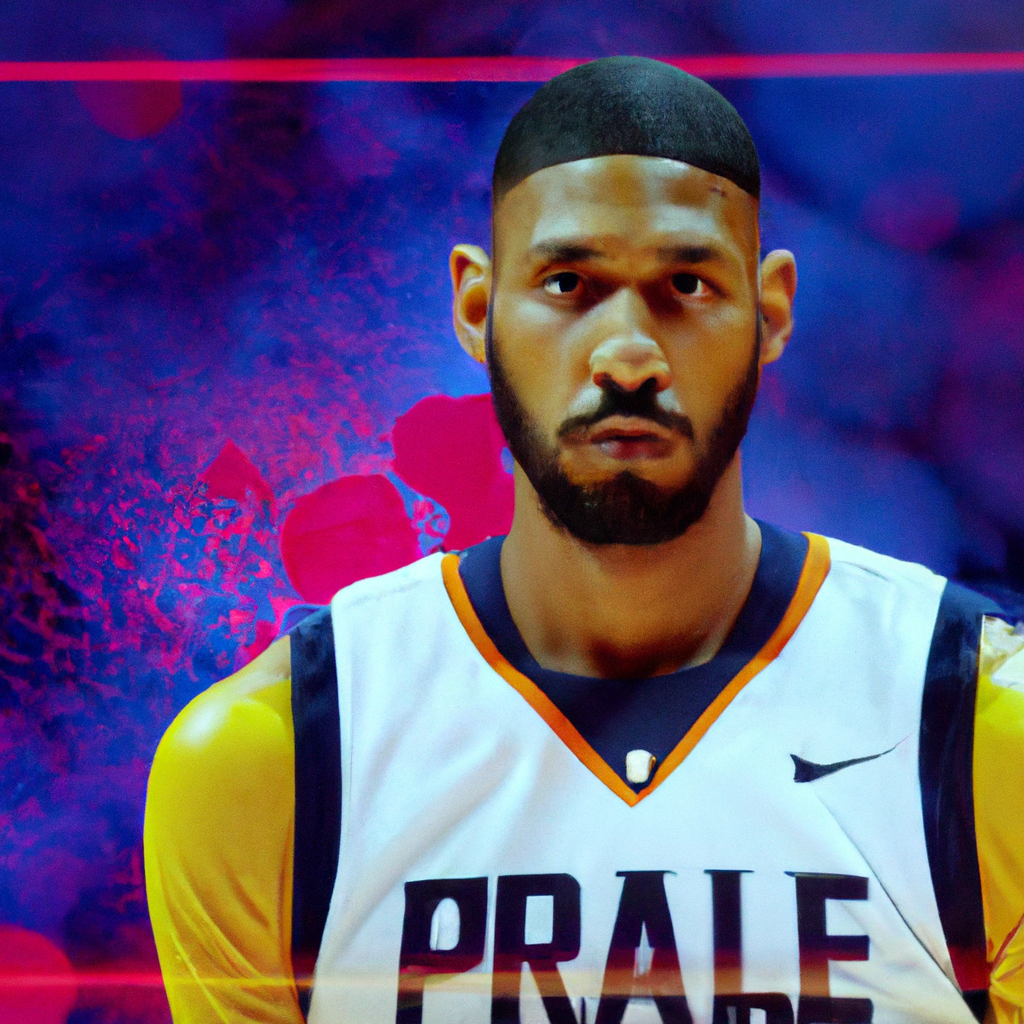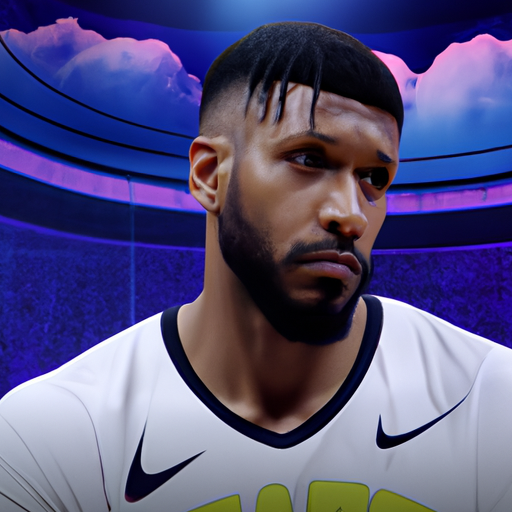Paul George reflects on NBA Bubble: It was prison

The Impact of Isolation on NBA Players in the Bubble
Paul George, the star player for the Los Angeles Clippers, recently opened up about his experience in the NBA Bubble. In an interview, he described it as “prison.” This statement sheds light on the impact of isolation on NBA players during their time in the Bubble.
The NBA Bubble was created as a response to the COVID-19 pandemic, with the aim of ensuring the safety of players and staff. It involved isolating teams in a controlled environment at the Walt Disney World Resort in Orlando, Florida. While the intention was noble, the reality of living in such isolation took a toll on the mental health and well-being of many players.
Isolation is a challenging experience for anyone, and NBA players are no exception. These athletes are used to a fast-paced lifestyle, constantly on the move, and surrounded by teammates, coaches, and fans. Suddenly, they found themselves confined to a limited space, away from their families and loved ones. The absence of social interaction and the monotony of daily routines became overwhelming for many.
Paul George’s comparison of the Bubble to prison highlights the feelings of confinement and restriction that players experienced. In prison, individuals are stripped of their freedom and forced into a confined space. Similarly, NBA players were restricted to their hotel rooms and the basketball court, with limited opportunities for leisure or exploration. The lack of freedom and autonomy undoubtedly had a significant impact on their mental well-being.
Moreover, the absence of fans in the Bubble added to the sense of isolation. NBA players thrive on the energy and support they receive from the crowd during games. The cheers, chants, and applause fuel their performance and create a sense of camaraderie. Without fans, the games felt empty and lacked the excitement that players are accustomed to. This further contributed to the feeling of being disconnected from the outside world.
The mental health challenges faced by NBA players in the Bubble were not limited to isolation alone. The pressure to perform at a high level, combined with the uncertainty surrounding the pandemic, created a stressful environment. These athletes are used to playing in front of thousands of fans, with the weight of expectations on their shoulders. The sudden shift to an empty arena and the constant fear of contracting the virus added an extra layer of stress.
The NBA recognized the mental health challenges faced by players and took steps to address them. They provided access to mental health professionals and encouraged players to seek support when needed. However, the impact of isolation on mental health cannot be underestimated. It is a unique and challenging experience that requires ongoing support and understanding.
As the NBA Bubble comes to an end and the league returns to a more traditional format, it is crucial to reflect on the impact of isolation on NBA players. The experience has shed light on the importance of mental health and the need for support systems in high-pressure environments. Moving forward, it is essential for the league and teams to prioritize the well-being of their players, both on and off the court.
In conclusion, Paul George’s description of the NBA Bubble as “prison” highlights the impact of isolation on NBA players. The confinement, absence of fans, and pressure to perform created a challenging environment for these athletes. The mental health challenges faced by players in the Bubble underscore the need for ongoing support and understanding in high-pressure environments. As the league moves forward, it is crucial to prioritize the well-being of players and ensure that their mental health is adequately addressed.
Mental Health Challenges Faced by NBA Players in the Bubble

Paul George, the star player for the Los Angeles Clippers, recently opened up about his experience in the NBA Bubble. In an interview, he described it as “prison.” This statement sheds light on the mental health challenges faced by NBA players during their time in the Bubble.
The NBA Bubble was a unique concept implemented by the league to resume the 2019-2020 season amidst the COVID-19 pandemic. Players were required to isolate themselves from the outside world, living in a confined space for an extended period. While the intention was to ensure the safety of the players and staff, it had unintended consequences on their mental well-being.
Isolation is known to have adverse effects on mental health, and the NBA Bubble was no exception. Players were away from their families and loved ones for an extended period, leading to feelings of loneliness and homesickness. The absence of a support system and the inability to engage in regular social activities took a toll on their mental well-being.
Moreover, the strict protocols and regulations within the Bubble added to the players’ stress levels. They were constantly under surveillance, with limited freedom to move around or engage in recreational activities. The lack of privacy and the feeling of being constantly monitored created a sense of unease and discomfort.
The pressure to perform at the highest level while dealing with these mental health challenges further exacerbated the situation. NBA players are accustomed to playing in front of thousands of fans, feeding off their energy and support. However, in the Bubble, games were played in empty arenas, devoid of any spectators. The absence of the usual atmosphere and adrenaline rush affected the players’ motivation and focus.
To address these mental health challenges, the NBA implemented various measures. They provided players with access to mental health professionals, ensuring they had someone to talk to and seek guidance from. Additionally, recreational activities and entertainment options were made available within the Bubble to help players relax and take their minds off the game.
Despite these efforts, the mental health challenges persisted. The unique circumstances of the Bubble, coupled with the high-stakes nature of the NBA playoffs, made it difficult for players to fully alleviate their mental stress. The constant pressure to perform, combined with the isolation and lack of normalcy, took a toll on their mental well-being.
Paul George’s statement about the Bubble being like “prison” resonated with many players who shared similar sentiments. It highlighted the need for the NBA to prioritize mental health and provide adequate support to players during such challenging times. The league has since recognized the importance of mental well-being and has committed to implementing further measures to address these concerns in future seasons.
In conclusion, the NBA Bubble presented unique mental health challenges for players. The isolation, lack of normalcy, and pressure to perform took a toll on their mental well-being. While the league implemented measures to support players, the circumstances of the Bubble made it difficult to fully alleviate their mental stress. Paul George’s statement shed light on the severity of these challenges and emphasized the need for continued efforts to prioritize mental health in professional sports.
The Struggles of Adjusting to Life in the NBA Bubble
Paul George reflects on NBA Bubble: It was prison.
The NBA Bubble, a concept born out of necessity due to the COVID-19 pandemic, was a unique and challenging experience for all players involved. While it provided a safe environment for the continuation of the season, it also presented a myriad of struggles and adjustments that players had to face. One player who openly expressed his difficulties with the Bubble was Paul George, a star player for the Los Angeles Clippers.
For George, the Bubble felt like a prison. The restrictions placed on players were stringent, with limited access to the outside world and strict protocols to ensure the safety of everyone involved. Players were confined to their hotel rooms for extended periods, only allowed to leave for team practices and games. This lack of freedom and isolation took a toll on George and many others, as they were used to the freedom of movement and social interactions that come with a regular NBA season.
In addition to the physical confinement, the mental strain of being away from family and loved ones was also a significant challenge. George, like many players, missed the support and comfort of having his family by his side during such a demanding time. The absence of familiar faces and the inability to share the highs and lows of the season with loved ones added to the feeling of being trapped within the Bubble.
Furthermore, the absence of fans in the arenas created a surreal atmosphere for players. The energy and excitement that comes from a roaring crowd were noticeably absent, leaving players to rely solely on their own motivation and the support of their teammates. This lack of external motivation and the absence of the electrifying atmosphere that fans bring to the game made it even more challenging for players to find their rhythm and perform at their best.
The mental toll of the Bubble was not limited to the isolation and lack of fan support. The constant media scrutiny and pressure to perform added another layer of stress for players. With every game being televised and analyzed, there was little room for mistakes or off nights. The pressure to live up to expectations and perform at a high level in such a unique and challenging environment was immense.
Despite the struggles, George acknowledged the importance of the Bubble in allowing the NBA season to continue. He recognized the sacrifices made by everyone involved, from players to staff, to ensure the safety and success of the season. While he may have felt confined and isolated, he also understood the necessity of the measures put in place to protect the health and well-being of all those involved.
In conclusion, the NBA Bubble presented numerous challenges for players, including Paul George. The physical confinement, mental strain, absence of fans, and constant pressure to perform all contributed to the feeling of being trapped within a prison-like environment. However, George also recognized the importance of the Bubble in allowing the season to continue and appreciated the sacrifices made by everyone involved. The struggles faced in the Bubble served as a testament to the resilience and adaptability of NBA players, who were able to overcome these challenges and provide fans with a thrilling conclusion to the season.

